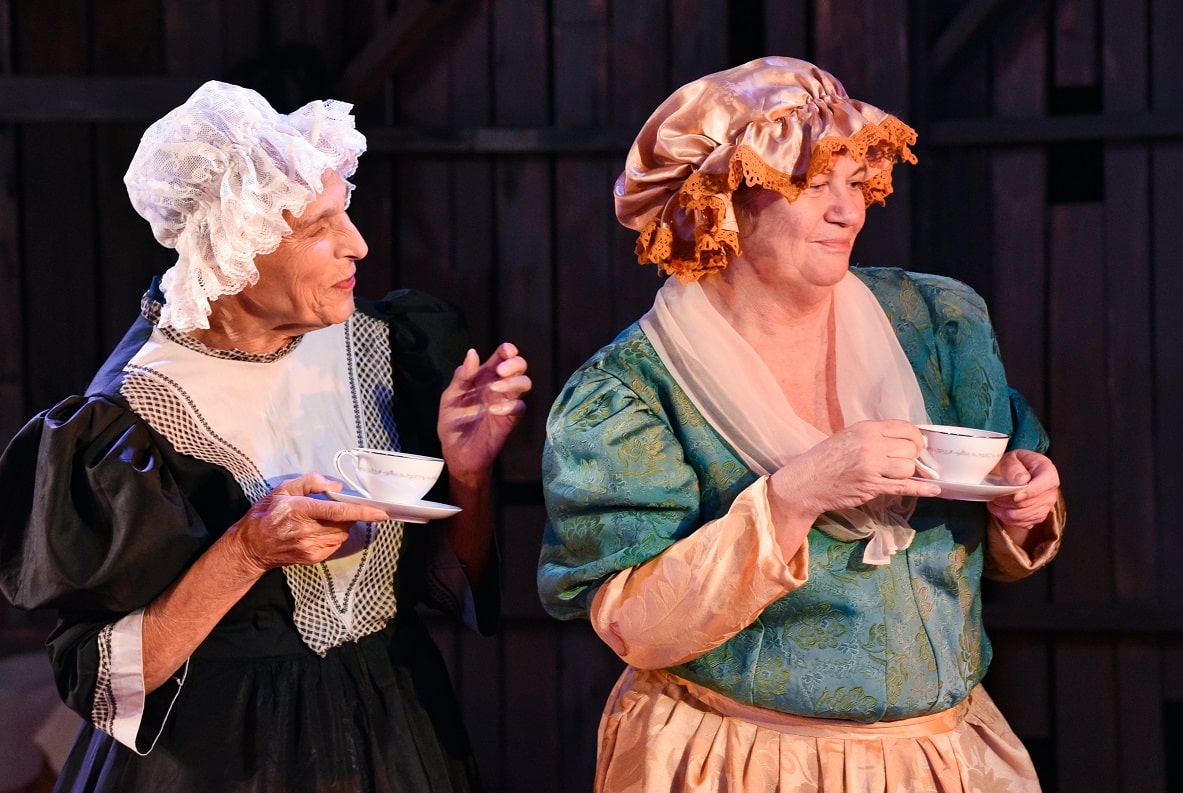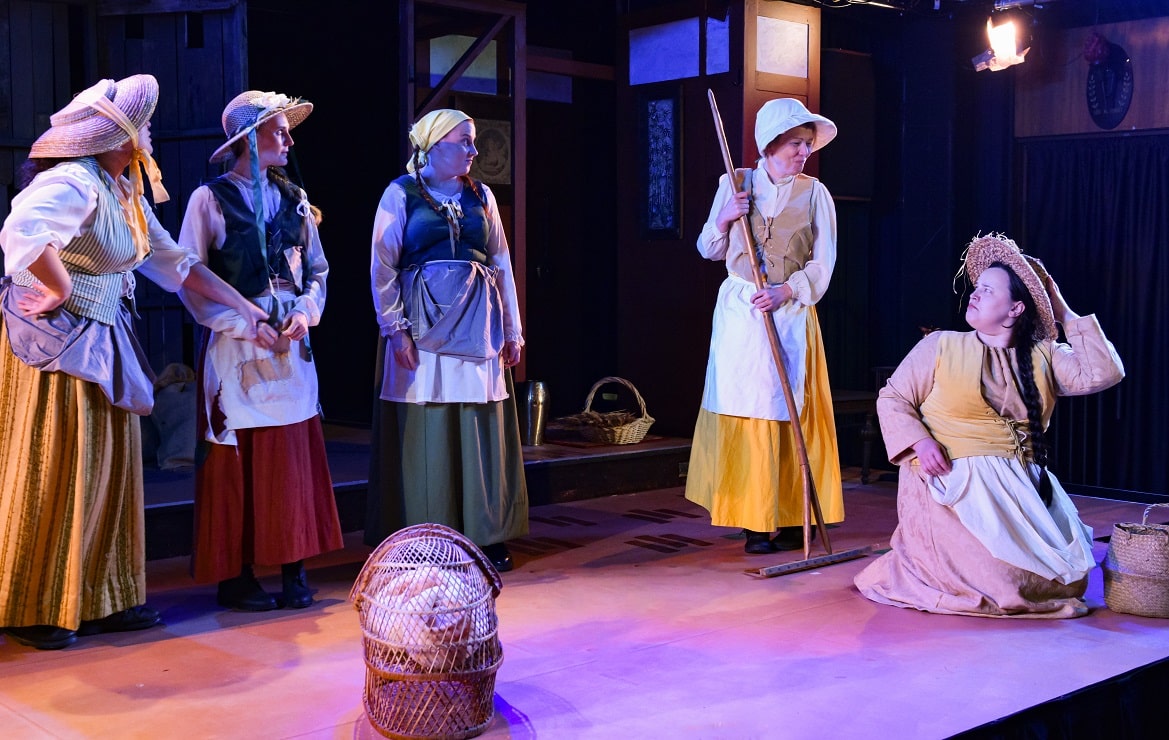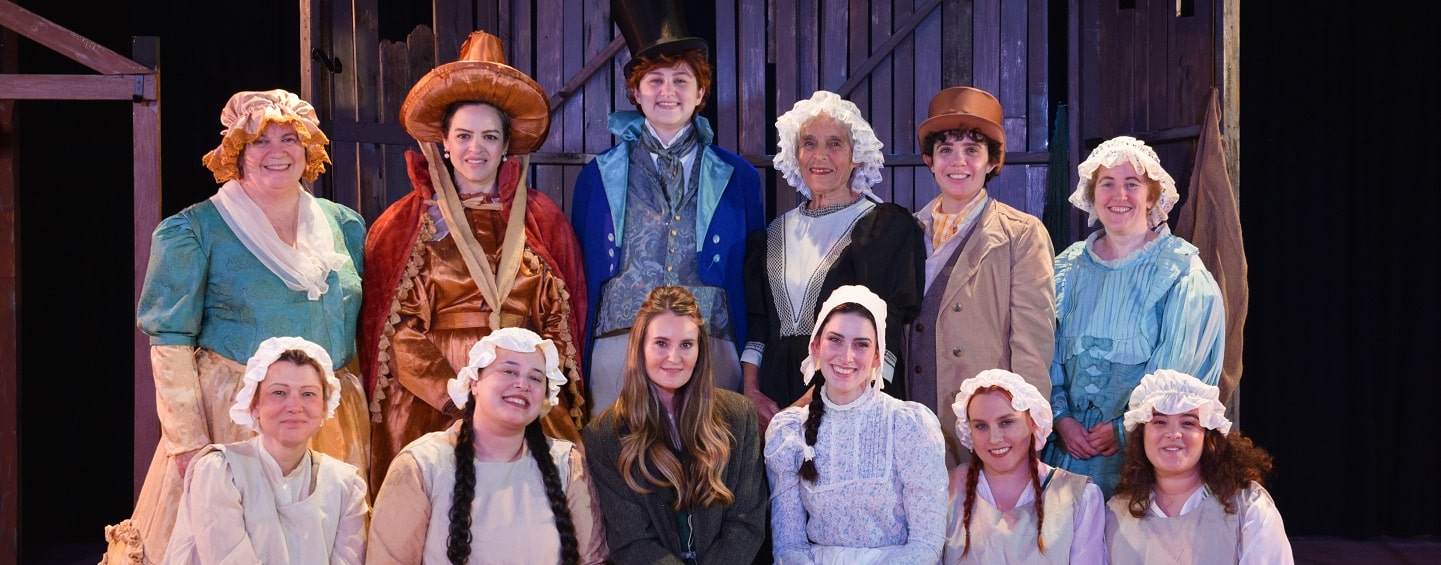“It’s been a year since I died, and still nobody has found me.”
A shadow emerges from a barn. It’s a figure in britches, and so begins a tale which captured the mass attention of people in 1827 – the murder of young mum Maria Marten. This true crime occurred in the village Polstead, Essex in England and newspapers sensationalized the case and the subsequent trial, dubbing it The Red Barn Murder. The Ballad of Maria Marten, written by Beth Flintoff, focuses on Maria’s life and of those who loved her, rather than the gruesome details of her death.
In the powerful opening scene, Maria (Laura Stead), her face lit effectively from underneath, giving her a haunting appearance, introduces us to her untimely death. Set and lighting designer Wayne Chee achieved dramatic visual effects such as this throughout the play, and notably when lighting the barn, where Maria is cruelly hidden for a year after her murder.
Maria is the narrator of her own story, and throughout the play, Laura seamlessly switches from telling the story to melting into a scene. By Maria narrating the play, I felt as though the author was honouring her and giving her the power to take charge of her own story, whereas, in real life, the real Maria didn’t have a voice in the newspaper articles.
We are introduced to Maria’s close friends, Phoebe (Chiara Helena Arata), Lucy (Kimberlea Smith), Theresa (Genevieve Sky) and Sarah (Jacqui Wilson), as they circle close to Maria for an effective costume change. When they move away, Maria is transformed into modest clothing as the 10-year-old daughter of a mole catcher, wearing a cotton skirt, apron, and shirt commonly worn at the time. It is here that we see the carefree, playful, and kind side to Maria, and the bonds of her friendship she has with her girlfriends. (She’s the ringleader for the Hazard Club, a secret club where they get up to numerous adventures together.) It is these strong bonds that remain a constant theme.
Music connects the audience to the 1800’s time period. The group of girls happily sing chants and dance, showing undisguised notes of joy in their own type of freedom. Violinist Chris Porteous adds depth to the story onstage. Costumes by JAS Enterprises were effective in portraying the characters believably.
Maria meets her new stepmum Ann (Madeleine Lawson) when she bounds back into her home one day. Ann is nervous and genuinely cares about making a good impression on Maria, otherwise Maria’s dad may send her away to a workhouse. This highlights how dependant women were on men for their happiness and wellbeing during this period. As time goes on, Madeleine successfully portrays the character development of Ann from a self-deprecating young stepmum to a strong protector who loves Maria.


Director Jennifer Willison put together a solid all-female cast and an intriguing story. Of course, the play has male characters, including the slimy Thomas Corder (Cee Egan) and Maria’s first love Peter Mathews (Niamh McKervey). Peter and his sister Lady Cooke (Jade Rodrigues) are from a well-to-do family, and it is through these characters where we see the strong divide between the working class and the wealthy upper class. The prejudice was clear from Lady Cooke, who initially showed kindness towards Maria and then cooled as she realised her brother was interested in Maria. This divide has echoes of truth, even now.
After the 20-minute interval, the second act takes a darker turn as we witness the disintegration of Maria’s mind after she comes under the influence of William Corder. She slowly becomes dependant on him as the audience bear witness to hearing the terrible deeds of this faceless character.
“Am I being tested for lunacy?” a dishevelled, distressed Maria with messed up hair cries. I noted that her beautifully styled hair in previous scenes had been an underlying focus, reflecting her own beauty and perhaps confidence.
It was powerful storytelling to see Maria relate her unravelling as she becomes the target of coercive control and domestic violence, yet she cannot see it, and in parallel, we also cannot see this character on stage. He remains a perceived threat to all. Sadly, the examples Maria uses are strikingly similar to the stories women who have been through this experience tell, almost two hundred years later. This is a story which spans time and must be told with the hope that change comes.
Rising amongst the darker themes in this story is the power of love and strength between friends. This is a moving tale which captured my interest for the whole play. Congratulations to The Hunters Hill Theatre on a strong opening night performance.
The Hunters Hill Theatre present The Ballad of Maria Marten, performing at Club Ryde.
Running time: 130 minutes (including interval)
June 7 – June 24, 2024
Tickets: $32 concession and groups of 10, $35 adults
www.huntershilltheatre.com.au

